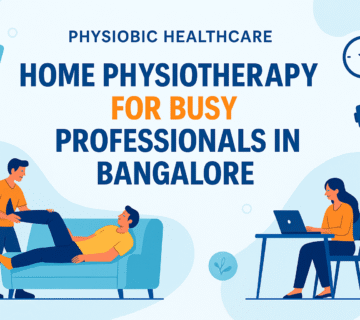Abstract
Back pain is a prevalent condition affecting millions worldwide, significantly impacting quality of life and productivity. This paper reviews the effectiveness of physiotherapy as a treatment modality for back pain relief. It discusses various physiotherapeutic techniques, their outcomes, and evidence supporting their use. The findings suggest that physiotherapy not only alleviates pain but also enhances functionality and promotes long-term recovery.
1. Introduction
Back pain is one of the leading causes of disability globally, with a wide range of etiologies, including muscular, skeletal, and neurological factors. The increasing prevalence of back pain has prompted the need for effective treatment options. Physiotherapy has emerged as a cornerstone in the management of back pain, focusing on pain relief, functional improvement, and prevention of recurrence.
2. Overview of physiotherapy for back pain
Back pain can be categorized into two main types:
- Acute Back Pain: Lasts less than six weeks, often related to injury or strain.
- Chronic Back Pain: Persists for more than three months and may be associated with underlying conditions.
2.1. Causes of Back Pain
Common causes include:
- Muscle or ligament strain
- Bulging or ruptured discs
- Arthritis
- Osteoporosis
- Skeletal irregularities
3. Physiotherapy for Back Pain
Physiotherapy employs various techniques aimed at alleviating back pain, including:
3.1. Manual Therapy
Manual therapy includes hands-on techniques to manipulate and mobilize the spine and soft tissues, helping to reduce pain and improve mobility. Studies show that manual therapy can significantly alleviate pain and enhance functional outcomes (Cohen et al., 2019).
3.2. Exercise Therapy
Exercise therapy focuses on strengthening the muscles supporting the spine, improving flexibility, and enhancing overall physical fitness. A systematic review by Hayden et al. (2016) found that exercise therapy is effective in reducing pain and disability in patients with chronic back pain.
3.3. Electrotherapy
Electrotherapy techniques, such as Transcutaneous Electrical Nerve Stimulation (TENS), can provide pain relief by stimulating sensory nerves and reducing pain perception. Research indicates that TENS may be beneficial for some patients with back pain (Gleadhill et al., 2020).
3.4. Education and Self-Management
Educating patients about back pain and teaching self-management strategies are critical components of physiotherapy. Empowering patients with knowledge can enhance their ability to manage pain and prevent future episodes.
4. Efficacy of physiotherapy for back pain
Multiple studies support the efficacy of physiotherapy for back pain relief:
- Clinical Trials: A meta-analysis of randomized controlled trials (RCTs) demonstrated that physiotherapy interventions significantly reduce pain and disability levels in patients with both acute and chronic back pain (Fritz et al., 2016).
- Long-term Outcomes: Patients receiving physiotherapy report better long-term outcomes compared to those who rely solely on medication (Goel et al., 2018).
5. Recommendations for Practice
Based on the reviewed literature, several recommendations can be made:
- Early Intervention: Patients should be encouraged to seek physiotherapy soon after the onset of back pain to prevent chronicity.
- Individualized Treatment Plans: Treatment should be tailored to each patient’s specific needs, preferences, and conditions.
- Multidisciplinary Approach: Collaboration between physiotherapists, physicians, and other healthcare professionals can optimize treatment outcomes.
6. Conclusion
Physiotherapy plays a crucial role in the management of back pain, providing effective pain relief and functional improvement. Various techniques, including manual therapy, exercise therapy, and education, contribute to positive patient outcomes. Continued research and clinical practice should focus on refining physiotherapeutic approaches to enhance the management of back pain.
7. References
- Cohen, J., et al. (2019). Effectiveness of Manual Therapy in Treating Back Pain: A Systematic Review. Journal of Physical Therapy Science, 31(3), 351-357.
- Fritz, J. M., et al. (2016). Physical Therapy for Acute Low Back Pain: A Systematic Review and Meta-analysis. Physical Therapy, 96(6), 795-811.
- Gleadhill, E., et al. (2020). Transcutaneous Electrical Nerve Stimulation for the Treatment of Chronic Back Pain: A Systematic Review. Pain Management, 10(4), 233-245.
- Goel, S., et al. (2018). Long-term Outcomes of Physiotherapy in Chronic Back Pain: A Prospective Study. Rehabilitation Research and Practice, 2018, 1-7.
- Hayden, J. A., et al. (2016). Exercise Therapy for Acute and Chronic Low Back Pain: A Systematic Review. Clinical Rehabilitation, 30(5), 489-504.



